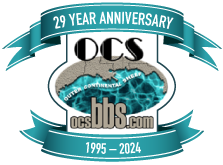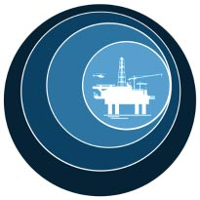Company Well Data for the Gulf of Mexico
| Field (Abbreviated) Name | Name | Description |
|---|---|---|
| SURFACE AR/BLK | Surface Area Block | The Area Code and designated OCS Block Number of the well at the surface location. |
| WELL NAME | Well # or Name | The name assigned to the well. |
| API NUMBER | API Well Number | A unique well identification number consisting of a two digit state code, a three digit county code , a five digit unique well code, and, if applicable, a two digit sidetrack code. |
| SPUD DATE | Spud Date | The date that the drilling rig first begins boring into the earth's surface. |
| BH STATUS | Borehole Status | Indicates the conditions relating to a borehole. |
| BH STATUS DT | Borehole Status Date | The date the borehole status became effective. |
| OPERATOR | Operator Name | The Abbreviated Company Name of the Operator of the well. |
| TD DATE | Total Depth Date | The date drilling on a well reached the total final depth. |
| WELL TYPE | Well Type | Indicates the final classification of a borehole denoting the purpose of the drilling. C=Core Test; D=Development; E=Exploratory; R=Relief. |
| WATER DEPTH | Water Depth | The depth of water at a well/platform location from the water level to the mudline. |
| TVD | True Vertical Depth | The vertical distance, in feet, from the rig Kelly bushing to the maximum depth of the well. |
| BH MD | Total Measured Depth | The actual distance measured along the axis of the borehole from the rig Kelly busing to the depth of maximum penetration of the well. |
| RKB ELEV | RKB Elevation | The distance, in feet, from the rig Kelly bushing to the mean sea level. |
| BOTM FLD CD | Bottom Field Name Code | The name of the field in which the well is located. |
| DIST | District Code | An indicator assigned to a suboffice of an OCS regional office which as delegated authority for field operation activities including permitting wells, inspections, drilling and production operations. |
| S NS DIST | Surface N/S Distance | The distance from the borehole surface location to either the North or South block boundary line. |
| S NS CD | Surface N/S Code | Indicates whether the surface borehole is location is measured from the North or South boundary line. |
| S EW DIST | Surface E/W Distance | The distance from the borehole surface location to either the East or West block boundary line. |
| S EW CD | Surface E/W Code | Indicates whether the surface borehole is location is measured from the East or West boundary line. |
| BOTTOM LEASE# | Total Depth Lease Number | The OCS Lease Number of the well at the total depth location. |
| BOTTOM AR/BLK | Total Depth Area Block | The Area Code and designated OCS Block Number of the well at the total depth location. |
| B NS DIST | Bottom N/S Distance | The distance from the borehole bottom location to either the North or South block boundary line. |
| B NS CD | Bottom N/S Code | Indicates whether the bottom borehole is location is measured from the North or South boundary line. |
| B EW DIST | Bottom E/W Distance | The distance from the borehole bottom location to either the East or West block boundary line. |
| B EW CD | Bottom E/W Code | Indicates whether the bottom borehole is location is measured from the East or West boundary line. |
| S LONG | Surface Longitude | Angle measured about the spheroid axis from a local prime meridian to the meridian through the point. A positive value denotes East. The longitude value of a location in the borehole. |
| S LAT | Surface Latitude | Angle subtended with equatorial plane by a perpendicular from a point on the surface of a spheroid. A positive value denotes North. The latitude value of a location in the borehole. |
| B LONG | Bottom Longitude | Angle measured about the spheroid axis from a local prime meridian to the meridian through the point. A positive value denotes East. The longitude value of a location in the borehole. |
| B LAT | Bottom Latitude | Angle subtended with equatorial plane by a perpendicular from a point on the surface of a spheroid. A positive value denotes North. The latitude value of a location in the borehole. |
DOCD
A Development Operations Coordination Document (DOCD) is a plan that describes development and production activities proposed by an operator for a lease or group of leases. The description includes the timing of these activities, information concerning drilling vessels, the location of each proposed well or production platform or other structure, and an analysis of both offshore and onshore impacts that may occur as a result of the plans implementation.
A Supplemental DOCD describes proposed activities on a lease(s) that were not included in a previously approved DOCD and will require approval of additional permit(s).
A Revised DOCD describes changes to the proposed activities included in a previously approved DOCD, but will not require the approval of additional permit(s).
Exploration Plan
An Initial Exploration Plan describes all exploration activities planned by an operator for a specific lease(s), the timing of these activities, information concerning drilling vessels, the location of each well, and an analysis of both offshore and onshore impacts that may occur as a result of the plan's implementation.
A Supplemental Exploration Plan includes a description of proposed activities on a lease(s) that were not included an original Exploration Plan for that lease(s).
A Revised Exploration Plan describes changes to proposed activities already included in a previously approved Exploration Plan.
APM
An Application for Permit to Modify is an application to conduct workover, completion, abandonment or any other non-routine operations.
A Revised Application for Permit to Modify involves a change to a previously approved Application for Permit to Modify.
A revision to a sidetrack involves a change to the drilling of a sidetrack from an existing well, which may be necessary for safety purposes, such as if an operator determines it necessary to set a liner deeper in the wellbore due to results from a formation integrity test.
New Well
A new well involves an operator drilling an original wellbore hole in the seafloor to a geologic target.
A revision to a new well involves a change to the drilling of new well, which may be necessary for safety purposes, such as if an operator determines it necessary to set a liner deeper in the wellbore due to results from a formation integrity test.
Sidetrack
A sidetrack involves an operator drilling to a new geologic target or a new location within the original target from an existing wellbore.
A revision to a bypass involves a change to the drilling of a bypass from an existing well, which may be necessary for safety purposes, such as if an operator determines it necessary to set a liner deeper in the wellbore due to results from a formation integrity test.
Bypass
A bypass is when an operator drills around a mechanical problem in the original hole to the original target from the existing wellbore.







